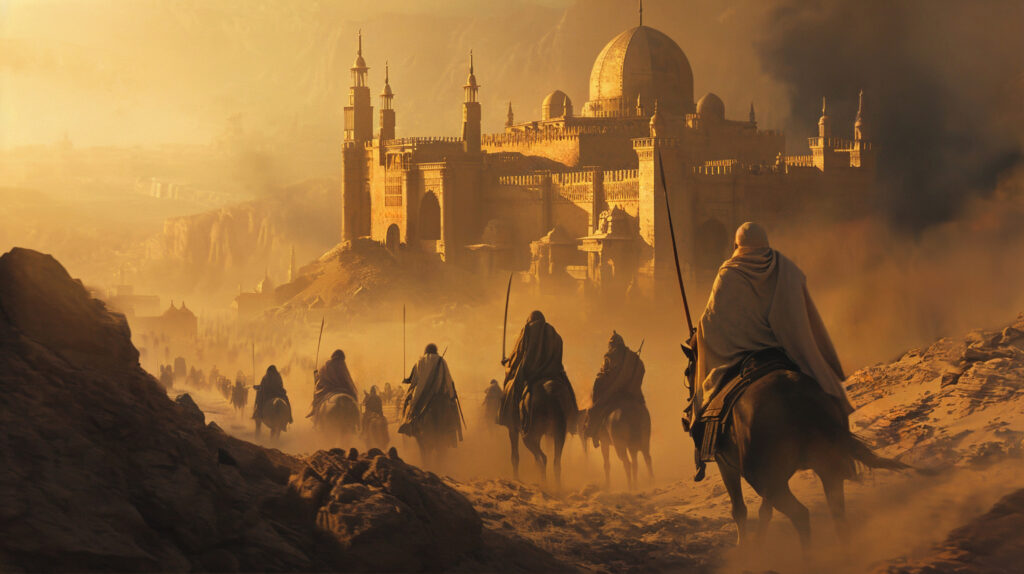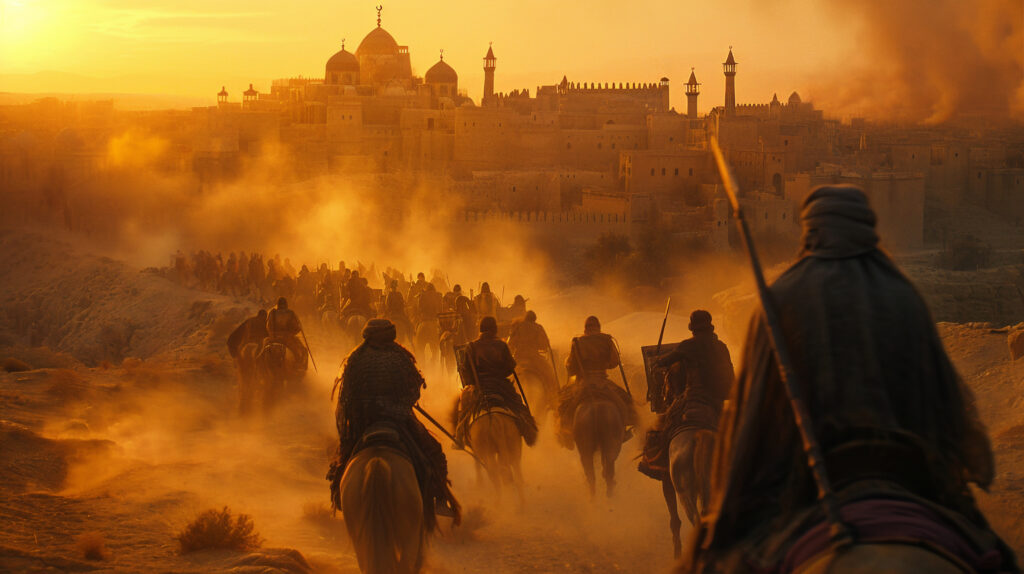1 on 1
Class Organization
24/7
Support Availability
Male/Female
Native Instructors
500+
Enrolled Students
Islamic History's Rich Tapestry
Introduction:
Islamic history covers over 1,400 years and includes many cultures, empires, and peoples. It is a history of political growth, knowledge, and spiritual development, stretching from the Arabian Peninsula to Asia, Africa, and Europe. This article gives a simple overview of important events and times in Islamic history, showing its impact around the world.
Safe Transaction:
The Life of Prophet Muhammad and the Origins of Islam (570-632 CE)
Islam began in the early 7th century in the Arabian Peninsula with the life and teachings of Prophet Muhammad, who was born in Mecca in 570 CE. He grew up as an orphan, became a merchant, and was known for his honesty. At 40, Muhammad started receiving messages from Allah (God) through the Angel Gabriel. These messages, later written down as the Quran, form the basis of Islamic belief.
In an area where most tribes believed in many gods, Muhammad taught the belief in one God. The Quraysh, the ruling tribe in Mecca, didn’t like his teachings because it threatened their power. In 622 CE, Muhammad and his followers moved to Medina to escape the persecution. This event, called the Hijra, marks the start of the Islamic calendar.
Muhammad started a Muslim community in Medina and became a strong leader in both military and politics. In the next ten years, Islam spread quickly across the Arabian Peninsula. By the time Muhammad passed away in 632 CE, most of Arabia had become Muslim.
The Caliphate of Rashidun (632–661)
Muhammad started a Muslim community in Medina and became a key leader in both military and politics. Over the next ten years, Islam spread quickly across Arabia. By the time Muhammad passed away in 632 CE, most of Arabia had become Muslim
One of the first challenges Abu Bakr (632–634) faced was the Ridda Wars, where he stopped rebellions from several tribes in Arabia. Under his successor, Umar ibn al-Khattab (634-644 CE), the Islamic empire grew quickly, taking control of large areas, including parts of the Byzantine Empire (Syria, Egypt, and Palestine) and the Sassanian Empire (Persia).
Under Uthman ibn Affan (644-656 CE), who came after Umar, the Quran was collected into one book. After Uthman was killed, a civil war called the First Fitna started over who should be the next leader. This conflict continued during the rule of Ali ibn Abi Talib, the fourth caliph (656–661 CE).
Ali’s rule had many conflicts, like the Battle of the Camel and the Battle of Siffin. His death in 661 CE ended the Rashidun Caliphate and started the Umayyad dynasty.
The Abbasid and Umayyad Caliphates
Muawiya ibn Abi Sufyan started the Umayyad Caliphate (661–750 CE), the first Islamic kingdom passed down in a family. He moved the capital from Medina to Damascus. The Umayyads expanded their rule west to Spain and east to the Indus River in today’s Pakistan.
The Umayyads ruled a large empire. They made many achievements, like in architecture and culture. But people didn’t like their rich lifestyle and felt they didn’t follow Islamic values. This led to the Abbasid Revolution, which took them out of power in 750 CE.
The Abbasid Caliphate (750–1258) was the second big Islamic dynasty, with its capital in Baghdad. Many believe the Abbasids started the Islamic Golden Age, a time of great achievements in knowledge, art, and learning. Baghdad became a place where scholars and thinkers from all over the Islamic world and beyond came to study.
Islamic academics achieved important advances in astronomy, medicine, philosophy, mathematics (such as algebra), and other disciplines during this time. Greek, Persian, and Indian academics' writings were translated into Arabic thanks to the translation effort, which was encouraged by the Abbasids and preserved and enhanced the body of knowledge from prior civilizations.
The Development of Islamic Empires
The Empire of Ottomans (1299-1922)
Osman I started the Ottoman Empire in the late 13th century, and it became one of the most powerful empires in history. At its height, the empire ruled over large parts of Southeast Europe, Western Asia, and North Africa. In 1453, the Ottomans captured Constantinople, ending the Byzantine Empire, and made it their capital, naming it Istanbul.
The Ottoman Empire was famous for its strong army, beautiful buildings like the Blue Mosque and Topkapi Palace, and a well-organized government. It had a big influence on the politics and culture of the Middle East and Europe for many years.

The Empire of Safavid (1501–1736)
The Safavid Empire was founded by Shah Ismail I in 1501 in Persia (now Iran). They made Twelver Shia Islam the main religion, which is still followed in Iran today. The empire was famous for its art, culture, and trade, and helped develop Persian buildings, poetry, and painting.

